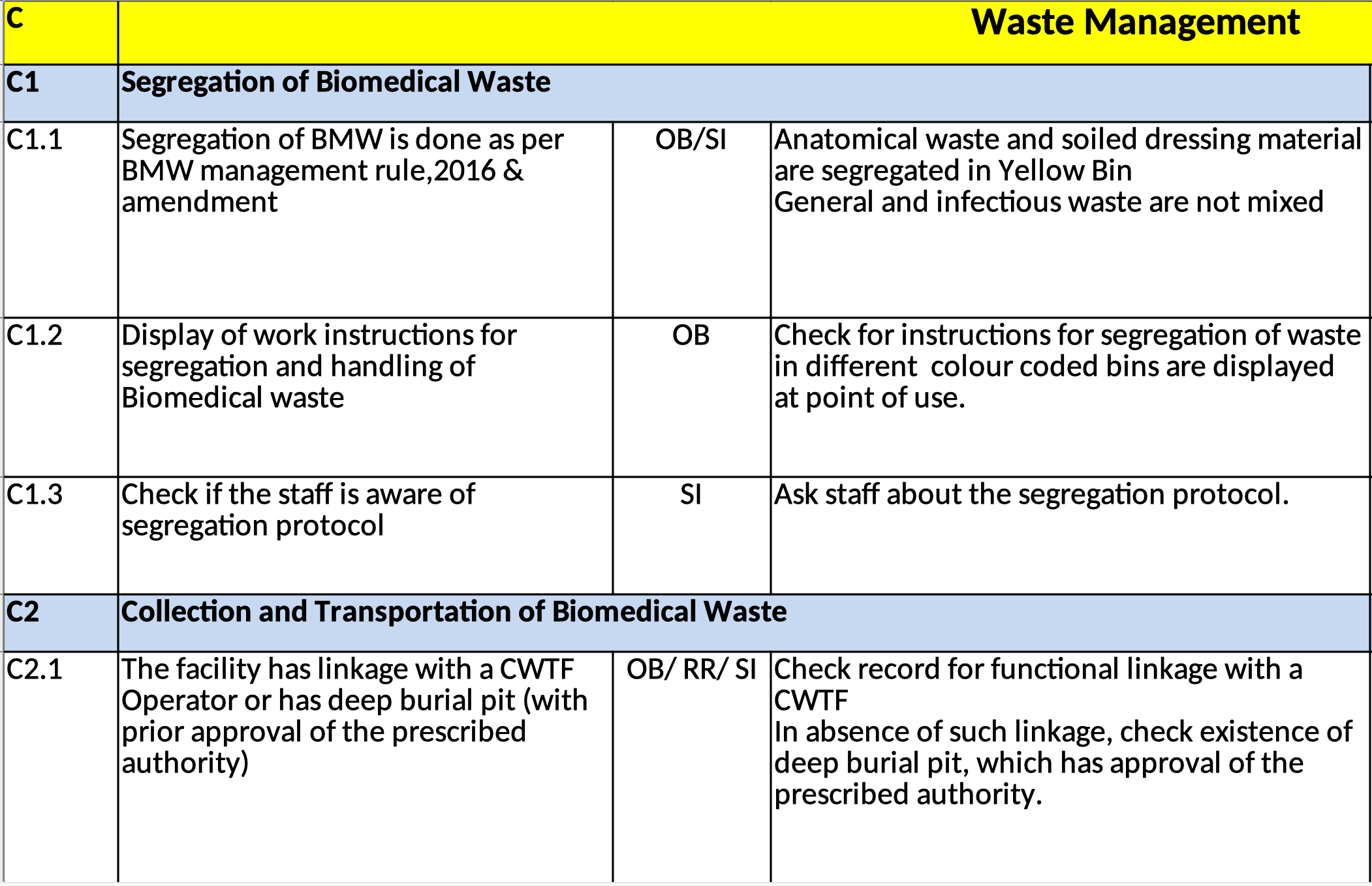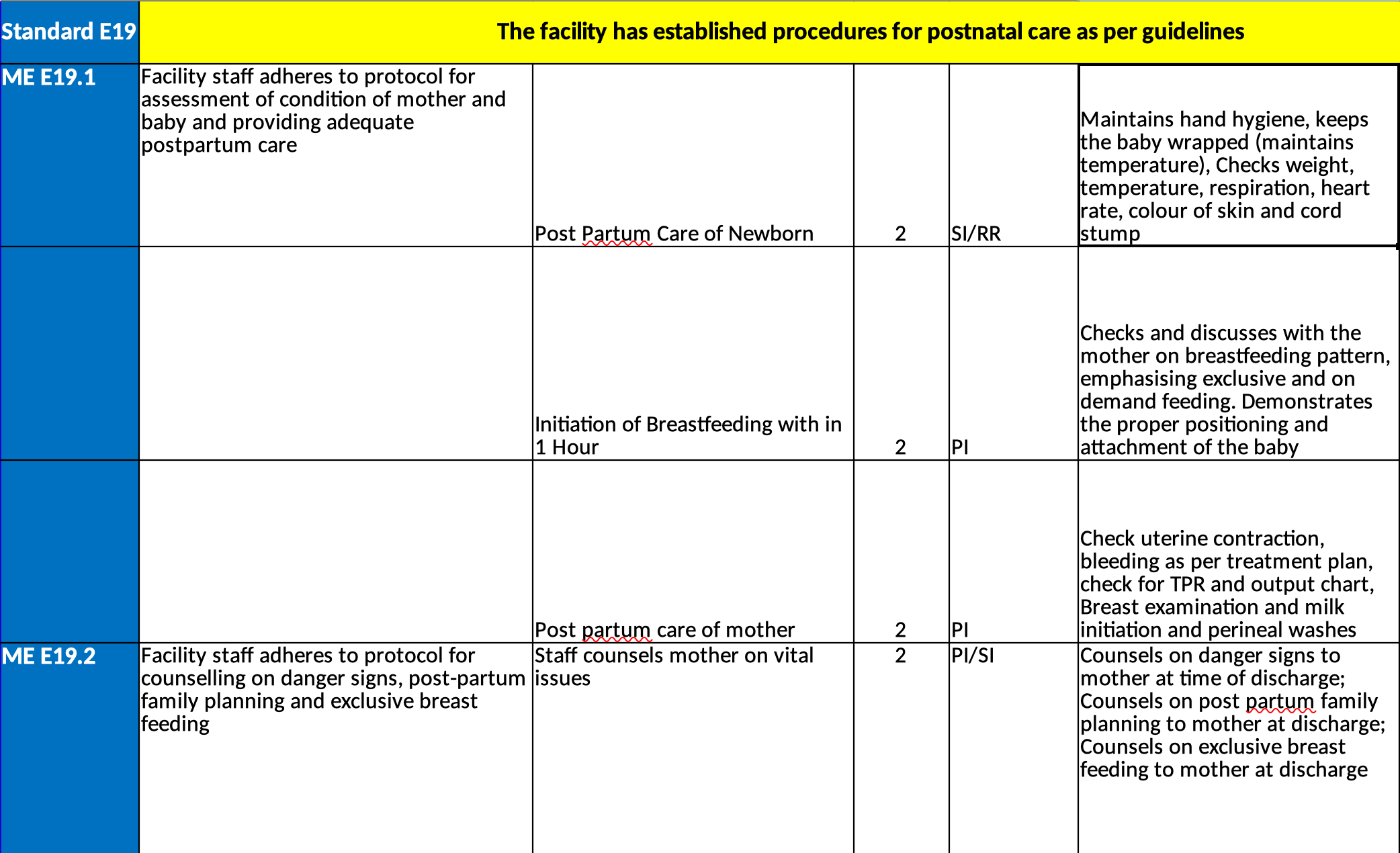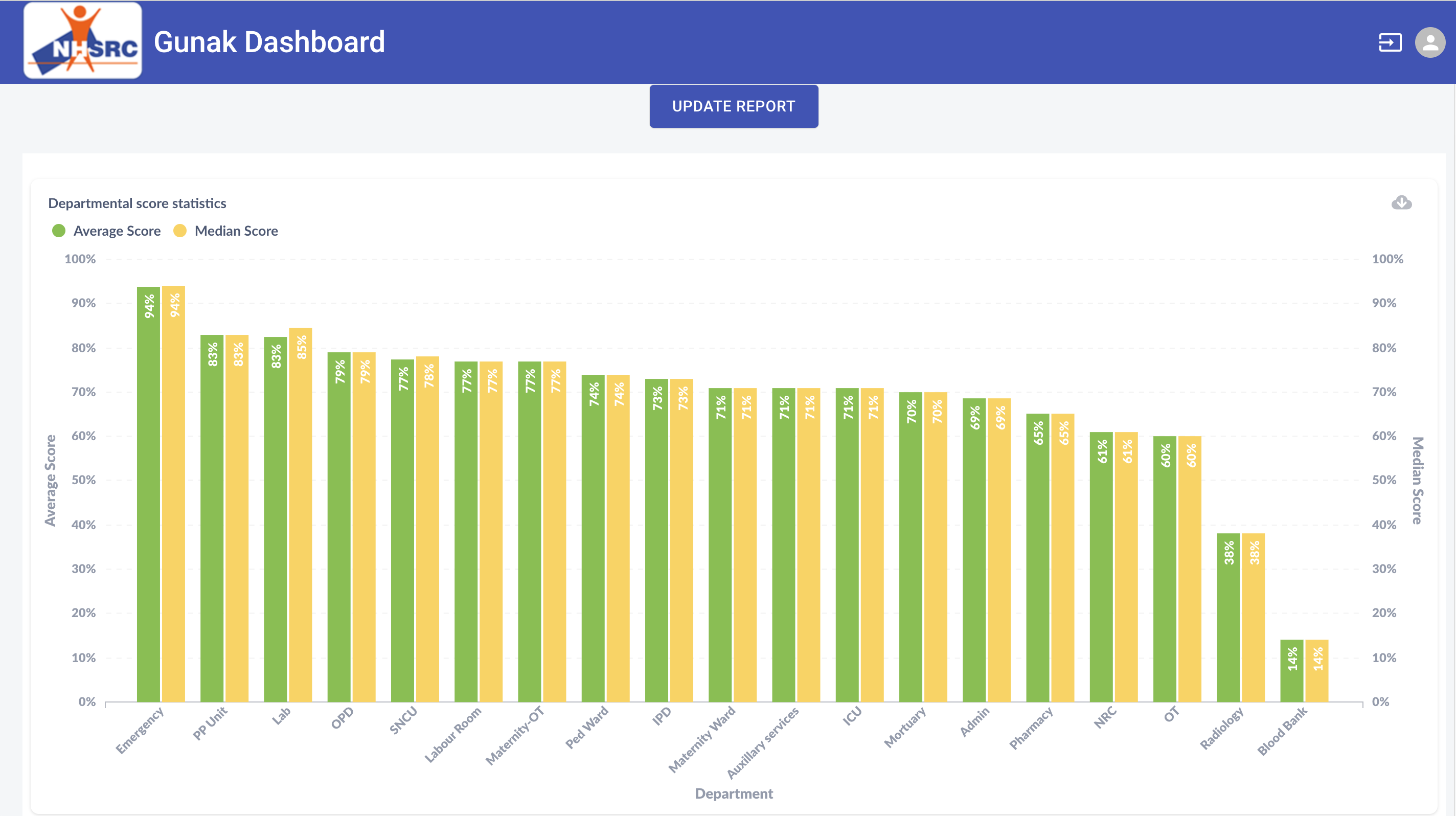Background
The first objective of the National Rural Health Mission (now just National Health Mission) was to provide access to the public healthcare system over almost the last two decades. As this objective is getting met to a great extent, the focus in the last few years has evolved from access to quality of health care provided in these hospitals and clinics. We are not experts but as we understand this quality involves - assessment/measurement, training/mentoring to improve quality, and certification. The scope of the Gunak system is helping in assessment and certification.
Towards this, we* have been engaged with NHSRC India in the development of Gunak for the last 5-6 years. Gunak is a software platform for various quality improvements programs run by the ministries of health (national and state) in India across the country.
About the program
The public healthcare system consists of various types of health facilities (clinics, hospitals) right from health and wellness centers (for every half a dozen villages) to medical colleges (which are tertiary hospitals, one or more in number in each state). NHSRC (part of the national MoH) has been working towards improving the quality of these health facilities. These quality improvements are related to the core functioning of the hospitals, focus areas of maternal and child health, and the cleanliness of facilities (under Swatcch Bharat).
Following are the key activities involved in this.
1. Development of very detailed checklists on which the health facilities can be measured. The checklists do vary by the level of facilities, programs, and sometimes by state. Some of the checklists are shared here, here, and here - under the tools section. For a quick feel of these checklists please see the images below.
2. Conducting training for quality assessors who can be internal or external. External assessors can be state or national-level assessors.
3. Verify assessments done by assessors and provide certification reports to the facility administrators.
SAMPLE from KAYAKALP Checkpoints

Sample of NQAS Checkpoints

What Gunak does
Broadly, the scope of the Gunak system is to allow for management of the checklists and performing assessments. For context, the Gunak system supports:
- 42 different types of assessment checklists
- 1,29,176 individual assessment units (called checkpoints) across them A single assessment may involve assessing thousands of checkpoints across various departments in a large hospital.
- Gunak mobile is currently active on 9700+ mobile devices. These are assessors across the country who use the app to perform assessments.
Technically the software system to support this must be able to do the following (apart from the regular functions of such a system):
- A platform for checklists where the users can define them instead of programmers. Essentially the checklists should be data and not code.
- The assessors should be able to perform assessments and get insights into them from their own devices without unnecessary restrictions.
Main user components of Gunak
1. Mobile app which can be used by assessors to perform assessment while on the move within the premises of the hospital.
The mobile app allows for performing assessments without requiring the internet. Hospital buildings, the remoteness of some facilities, and the number of data points to be collected require the mobile app to work as efficiently as possible for the user.
The mobile app (available from Playstore) doesn't require any login, except when the user wants to submit their assessments. The assessor can perform a basic analysis of scores on the device itself and share a CSV format of the assessments via email or other channels. The ability to perform assessments without login is a win-win. The people operating the system do not have to issue login to everyone (as there are many assessors who may be doing internal assessments). Certain types of assessments require login as they may result in rewards or official certificates given to them.
Few screenshots of mobile app used by assessors
2. Web application to manage the checklists
Checklists are managed in two modes - bulk and corrections. Since a checklist could contain thousands of checkpoints entering them one by one is tedious and error-prone. Excel is a much better tool for this. Gunak supports importing checklists in excel form. Once checklists are imported into the system the Gunak provides the ability to edit them for making corrections, retiring them, adding new items.
3. Dashboard and reports for various state and national stakeholders to understand and analyze the quality of health facilities, districts, states across various types of checklists.

Comparison of average and median scores of various departments for a state (demo data not actual)
4. REST API for other systems to access the checklists and assessments done using them.
Almost all the data managed in Gunak is available via REST API for third-party systems to integrate with. The API documentation is available here. Gunak doesn't provide API for facilities because it integrates with the national registry for the same - hence for facilities, one must integrate with the national registry.
The software for Gunak is available here - https://github.com/nhsrc
* Disclaimer
All the ideas about the domain and use cases came from specialists at NHSRC India. We have interacted very closely with (in no particular order) - Dr. J.N. Srivastava, Dr. Deepika Sharma, Dr. Nikhil Prakash, Dr. Rashmi Wadhwa, and Anand Yadav.
Folks at Samanvay have all worked in an *individual* capacity with NHSRC over the last 5-6 years.
The initial mobile app design was created by Varun Pai.
Author: Vivek Singh
Published on: 07-Mar-2022